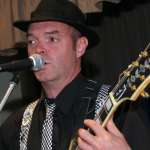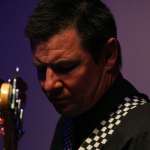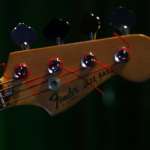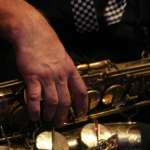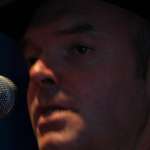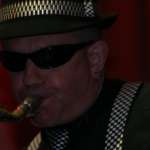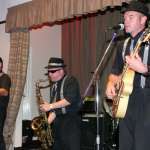I am an ex residential BT engineer with over 20 years experience.
xbt telephone engineer worthing for all your phone repairs and installations
Extensions sockets /fitted/moved/added.
Also upgrade internal and external cables.
I cover a 20 mile radius of Worthing.
Phone Rolf on 07946 640285 or email xbt telephones@fsmail.net for advice, prices and quotes.
]]>
Driftwood are a local female fronted semi-pro 5-piece covers band, and are versatile musicians with many years of experience. We perform well known hits from bands such as The Beatles, Queen, Fleetwood Mac and The Eagles - then bring you bang up to date with hits from contemporary artistes such as Paolo Nutini, Kings of Leon, Maroon 5 and even Adele. Whatever your taste in music, there is something for all ages, and our music is guaranteed to keep everyone dancing! With fantastic female vocals and an amazing selection of hits, we love to spread our enjoyment of our performance to everyone in the room! Whether you require laid back ballads over dinner or a rocked-up party atmosphere, we can supply music that suits the occasion. We are very passionate about what we do, and don't use any backing tracks as we like to keep our music real. We also have a dedicated sound technician that makes sure our sound quality is second to none! To find out more about Driftwood - pics, mp3's, testimonials... then go to our website at http://www.driftwoodlive.com Just contact us at drifwoodinfo@ntlworld.com or on 07765 870895 for more information and availability.]]>
9 Leeds Close
Worthing
BN13 3QP
Tel: 01903695194
www.markwild.co.uk
Mark started performing magic in 1979 and has performed shows for both adults and children on many occasions. In 1994, Mark successfully became a full time professional entertainer fulfilling engagements throughout the country
]]>Just Pianos
4 Greyfriars Close
Worthing
BN13 2DR
Tel: 01903261804
Just Pianos specialises in just pianos. Based in Worthing West Sussex we import, sell, hire, repair, repolish, and recondition a large range of pianos. We can also help with piano removals. Eastablished for 23 years we offer a friendly and effecient service.
Anicare Veterinary Group Gorin
Tel: 01903503898
PO Box 4253
Worthing
BN11 1BH
Tel: 08000926348
If You Are Looking For A Mobile Disco, Band, Karaoke Or Any Form Of Entertainment, Then look no further. We can provide most forms of entertainment, many of which appear on our website. Entertainment can be provided for all types of event anywhere in the UK.
]]>The Steyne
Worthing
BN11 3DU
Tel: 01903236103
Chatsworth has an attractive Georgian Frontage and is situated in a terrace overlooking Steyne Gardens and the sea, near the town centre of Worthing. The interior retains its early charm yet has all the features expected in a modern first class hotel, and our guests are assured of a high standard of comfort and facilities and most importantly a friendly efficient service.
]]>29 Pembroke Avenue
Worthing
BN11 5QS
Tel: 01903526385
Atlas Trade Finance provide International Trade Finance and Credit Protection solutions to companies worldwide who are shipping to buyers in North America and Europe. We also work with UK importers who require Letter of Credit and Post Shipment finance.
]]> ‘For Immediate Release’
‘For Immediate Release’
Headline THE STORM ROLLS IN!
A new junior basketball club is rolling into our local area, under the new name of the ‘THE STORM’. They will be based at the new state of the art training facility at the Sir Robert Woodard Academy in Lancing.
Under the guidance of Worthing Thunder’s Head Coach and Ex England International Mr Gary Smith and other Coaches. The coaches are looking forward to passing on their experience and knowledge to the new players ‘There is so much potential and great coaching in our local area, we know this because of so many of our junior athletes are playing at national & international level in the area ’ said Gary Smith.
With innovative ways to train recruits from across the local area & county, it will demonstrate its ability to connect with players, and to get the maximum out of their talent. Each child will be given ‘individual development plans and guidance’.
Everything is set in place all the facilities and get an extremely experienced and unique set of coaches together, to teach young people in the local area’. We strongly believe in Basketball for ALL, we have set up a bursary for parents whom are on low incomes, which will subsidise the cost of training. This can be set up very discreetly by contact admin@srwastorm.com, and we want to ensure money issues do not stop children playing Basketball! Jon Fletcher, the Commercial Manager of THE STORM. We have received many messages of support from NBA Superstars such as Dwight Howard of the Orlando Magic,
Shawn Marion of the NBA Champions Dallas Mavericks and Drew Sullivan the Team GB captain.
The club is hoping now to attract new and up and coming talent from the local & Sussex Area from ages 5+ through Under 11’s, 12’s, 14’s, 16’s, 18’s. The club is also keen to develop a Girls teams and an Additional Needs Programmes at the club starts at the End of September. With the Junior Academy, Coached by Eloise & Bob all set to go, Their role at the Academy is to teach the Fundamentals of Basketball, but more than just this, it is to support and develop a young person’s confidence and to nurture a belief in themselves and their teammates, not just Basketball Skills but Skills for Life. Let’s face it even Michael Jordan needed to be taught by someone! He was also told that he would be too small for basketball! How wrong they were. The readers will be interested to know that from this local area we have produced many England Internationals at School age! And many from the local area and many play at National League standard! Competing with the ‘best of the best’ from the UK and abroad.
THE STORM wants to bring the joy and passion of the game of basketball and this is reflected in the coaches when they talk about the Game they Love. ‘There is nothing more satisfying than hearing a swish of a net when the basketball goes through it or you see the moment that a ‘kid just gets a move or pulls a move that an NBA star makes!’ it’s a joy!’
What the club has managed to secure is amazing! The club is also in the throes of aligning itself with the Worthing Thunder to help cross promote both clubs. Frank Gainsbury, Chairman of the Worthing Thunder said ‘we are very happy to help this community club to achieve its full potential for the coming years. We will be working together in the coming months to find innovative ways try to help promote more Basketball in the Sussex area’
Indeed the club has been very innovative as THE STORM has produced a free WIFI service in Liverpool Gardens where you can download the mobile phone applications via WIFI and Bluetooth.
The end of a press release —————-
Contact Information
Jon Fletcher, admin@srwastorm.com Mb: +44 (0)77170 20000
Website: www.srwastorm.com
]]> Your Local Ukviews Agent for Worthing is Dave McPherson.
Your Local Ukviews Agent for Worthing is Dave McPherson.
My name is Dave McPherson and I have lived in Worthing for over 40 years.
I am married to Viv and have two children, Kim and Nicola . I also have a granddaughter Alicia Marie and a grandson Alfie David.
My working background has mostly been in Sales, Marketing and Finance and now currently run Worthing UK Views which is the Local Community Website for the Worthing Area.
I have several Hobbies and Interests which includes Personal Fitness, Football, Swimming and Music. I also do Voluntary work for St. Symphorian’s Church, Durrington where I am also their Publicity Officer and Deputy Warden. Some of my time is also devoted to fundraising for a Heart Charity.
I do hope you find this website of interest and that you can get involved in some way by placing content such as Local Events, writing articles on almost any subject you like or if you have a business receive a Free Listing. We also have a Forum. Share your business ideas and views with others, keep up to date with local news and views and also use the Forum to place notices or chat.
If you need to contact me about any of the above please use the ‘contact us’ page.
]]>

If you have a pre-school child, pram and toddler groups can be great fun.
During the session you can enjoy various different activities with your child.
All parents, grandparents and childminders are welcome to bring their children and babies.
For 70p per family you can get out the house and meet lots of other people (mums, grannies, dads, etc) who are in exactly the same position as you – trying to entertain one or more young children.
Before very long your child will have formed friendships with the other children and babies and they will be happy playing together whilst you enjoy a sit down and making your own new friends!
Please remember the children are to be supervised at all times and they remain your responsibility throughout the session.
All these sessions will be open during term times (except for Holy Week).
We meet in St Symphorian’s Church Hall, Durrington Hill, Worthing, West Sussex BN13 2PU on:Tuesdays and Fridays (10 – 11.30).
During each session we offer a varied range of activities for you and your children to share. We hope you will both enjoy discovering new skills and learning together. Try out new activities whilst sharing this time and helping your child develop physically, mentally and socially.
Please come and join us on one or more sessions a week. This is a great time to meet people and make new friends. We are waiting to meet YOU!
]]>A family run firm that has been serving the south for the past 30 years. Full Servicing & Repairs of All Mobility equipment.
Mobility Scooters – Wheel Chairs – Arm Chairs – Personal Care – Toileting & Bathing – Health & Leisure – Dining & Bedding.
]]>
I hope you can find everything you need. Nikki’s cakes is focused on providing high-quality service and customer satisfaction. I’ll do everything I can to meet your expectations.
Need help designing your ideal wedding cake, or something special for a loved one, no problem. A cake designed by you for you so guaranteed to be unique and never the same as everyone else.
——————————————————————————————————————————————
 Variety of Cakes to choose from:
Variety of Cakes to choose from:
- Weddings
- Birthdays
- Childrens
- Christening
- Cup Cakes
- Other Special Ocassions

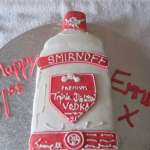
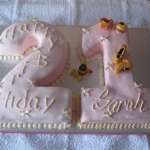

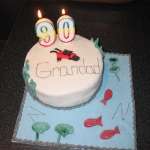
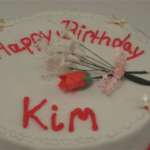
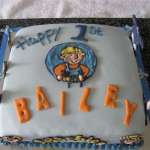


Nikki’s Cakes
Tel: 07903 168179
Email: info@nikkis-cakes.com
]]> Business Description Here:
Business Description Here:
This is a short business description of up to 150 words that gives an overview of the business using plenty of keywords to describe the business and its services without going into detail.
This serves two purposes:
- The visitors to the site can get a good idea of the business and their services without trawling through a load of text.
- The search engines can get to the relevant keywords to index the page without going through a lot of irrelevant text.
Services or Product list Here:
- It is best to use bullet points here:
- You can do a list of the various Products
- You can also list the services offered
- This is much easier for visitors to see what the business has to offer
- Do not forget to use keywords.
- Use the most popular items that may be used when someone searches for a local business like this one.
You can place a gallery of up to 8 images here:




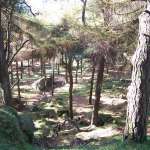


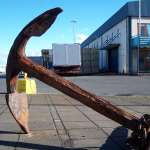
Contact Information Here:
Business Name
Business Address
Post Code
Tel. Nos.
Email Address
]]>The Gangsters are a 4 piece band comprising of:
Andy: Guitar & Vocals—–Mark: Saxophone
Micky: Drums—–Mick: Bass
Their style of music suits every occasion with music covering a wide blend of SKA, SOUL, and ROCK N ROLL, and include hits from Madness, The Specials, Bad Manners, The Blues Brothers,
and popular and well known rock n roll and soul classics.
LET THE BOYS PAY YOU A VISIT AND YOU’LL BE BLOWN AWAY.
This versatile, professional band provides their audience with a great visual and musical performance dressed in their smart, stylish black suit and shades.
Their energy on stage is contagious, and having performed at both European and UK venues their popularity continues to grow.
CONTRACTS
The gangsters are on the wanted list, and are highly sought after. They are available for:
Business Functions, Corporate Entertainment, Dinner Dances, Weddings, Birthdays, Pubs or Clubs
Early booking is recommended for any date to avoid disappointment.
GIG GUIDE 2011
SATURDAY FEBRUARY 26 – THE COB & PEN PUB (LITTLEHAMPTON)
FRIDAY MARCH 11 – THE BLACK HORSE PUB (ROTTINGDEAN)
SATURDAY MARCH 12 – NEW ELTON SOCIAL CLUB (LONDON)
FRIDAY MARCH 18 – THE JOYFULL WHIPPET PUB (LANCING)
FRIDAY MARCH 25 – THE WARWICK PUB (WORTHING)
SATURDAY MARCH 26 – BIGGIN HILL SOCIAL CLUB (BIGGIN HILL)
More Dates To Be Added Soon.
Dates may be subject to change so please contact us or the venue to confirm.
FIND US ON FACEBOOK AS THE GANGSTERS GROUP AND JOIN OUR FRIENDS
For any more information about THE GANGSTERS please call or email us.
Tel: 01903 241748
Mob: 07720 353935
Email: info@the-gangsters.co.uk
]]>
Welcome to the Church of St Symphorian , Durrington. The first historical reference of this place is to be found in the Domesday Book. In the reign of William II, the patronage was given to the Monastery of Sele (Beeding)
In Anglo-Saxon times, when Durrington was known as Derentun, there was a small Chapel of plaster and thatch called wattle. In the early 13th Century this was replaced with a building, having a chancel and nave constructed of flint and stone, and probably roofed with Horsham ‘tiles’. This particular style would have been much in keeping with many smaller churches which still survive on the South Downs and coastal plain of Sussex.
Documents survive which suggest that the Chancel was separated from the nave by a rood screen, open in its upper part so that worshippers could share in the Divine Office being performed by the Priest in the Chancel. The Rood Screen was surmounted by a loft, often referred to in medieval documents as a Solar. Its main purpose was to accommodate a few choristers or a small organ.
The steeple of the Chapel was built to carry the bell. This was little more than a raised bell cote above the gable end in a wooden structure. It was built in the western bay of the nave roof, and covered externally with boarding.
Around 1260, the Saxon windows were taken out and the present 13th Century windows were put in.
The church remained much the same, with regular acts of worship, until the 1660’s when the parish became caught up in the Civil War. The Rev. William Stanley was an ardent politician on the Royalist side whilst most of his parishioners were Cromwellians. Around 1643, the Chapel was partially demolished by the inhabitants of Durrington who naturally did not see eye-to-eye with their incumbent. This is a somewhat drastic way to register your displeasure towards the local Vicar! Things went from bad to worse in the years that followed, it was suggested that the Vicar neglected his duties and that he reviled the people of Durrington and spoke maliciously to them when they came to worship, and the poor were constrained by threats and fears.
By 1677 the Chapel was declared “unusfull for the performing of Divine Service” having been in decay for some time, and that the “Ruines thereof was chiefly occasioned by souldjers of the late warrs”. Despite attempts to repair the Chapel, it was eventually agreed that the people of Durrington be allowed to worship, baptise and bury at Tarring Church. On 24th January 1680, with the agreement of both parishes, the then Dean of Chichester, Dr. Thomas Briggs, took steps to unite the Chapelry to Tarring Church. Records show that the Chapel was still occasionally used for many years.
In 1890, the Rev. Canon Henry Bailey, Rector of Tarring, erected a small Mission Room at his own expense and left it upon trust to the inhabitants of Durrington for the performance of Divine Service. It was built adjoining the east wall of the ruined Chapel and afternoon services were held every Sunday at 3.30pm and Holy Communion at 8am on the last Sunday of the month.
Towards the latter part of the 19th Century, thoughts turned to restoring the Chapel and the funds began to be raised. Unfortunately the fundraising came to an end when the Rev. Dr. Springett, Rector of Tarring and the person leading the fund raising effort, was moved to Brixton in 1898.
When extensive repairs were needed to the Mission Room, enthusiasm was rekindled for the restoration work. However, it was not until 14th July 1914, when the “Ancient Township and Chappelry of Durrington was constituted as a separate Ecclesiastical Parish” that things began to happen. Rev. William Edward Dixon Penfold was appointed Vicar of Durrington and during his early ministry work began on the restoration of the church.
Part of the old building was incorporated in the present one, using the foundation of the north wall, and part of the south and west walls and extending the nave. The dedication of the original church is unknown but on 13th October 1915 the new church was dedicated to St. Symphorian and was consecrated on 15th December 1916. The chancel and vestries were added and the final work was dedicated by Bishop Bell on 3rd September 1941.
There have been a number of historic events in St. Symphorian’s:-
Petertide 1986, Bishop Colin of Horsham ordained four men to the priesthood. This was the first ordination service to be held in this church.
In 1987, one of the services to admit women to Holy Orders took place here when eight women were ordained Deacon by Bishop Colin of Horsham.
Over the years many faithful souls have worked to maintain and improve the centre of Christian witness in Durrington. There is much to thank God for and so our celebrations are as much about the Church as a people as the building. May the love and devotion which has brought us thus far continue in the years to come.

 Communities in Worthing
Communities in Worthing
The borough of Worthing has about 50 active Christian places of worship. There is also a mosque, which follows the Sunni tradition. There are also 16 former church buildings which are either disused or in secular use.
Worthing’s first Anglican church, St Paul’s, was built in 1812; previously, worshippers had to travel to the ancient parish church of Broadwater. John Rebecca‘s classical-style building became structurally unsound and closed in 1995. The austere design was well regarded at first, but architectural writers have since criticised it. Its importance derives from its status as “the spiritual and social centre around which the town developed”. Residential growth in the 19th century growth led to several other Anglican churches opening in the town centre: Christ Church was started in 1840 and survived a closure threat in 2006; Arthur Blomfield‘s St Andrew’s Church brought the controversial “High Church“ form of worship to the town in the 1880s—its “Worthing Madonna” icon was particularly notorious; and Holy Trinity church opened at the same time but with less dispute. Other Anglican churches were built in the 20th century to serve new residential areas such as High Salvington and Maybridge; and the ancient villages which were absorbed into Worthing Borough between 1890 and 1929 each had their own church: Broadwater’s had Saxon origins, St Mary’s at Goring-by-Sea was Norman (although it was rebuilt in 1837) St Andrew’s at West Tarring was 13th century, and St Botolph‘s at Heene and St Symphorian’s at Durrington were rebuilt from medieval ruins. All of the borough’s churches are in the Rural Deanery of Worthing and the Diocese of Chichester.
 The first Roman Catholic church in Worthing opened in 1864; the centrally located St Mary of the Angels Church has since been joined by others at East Worthing, Goring-by-Sea and High Salvington. All are in Worthing Deanery in the Roman Catholic Diocese of Arundel and Brighton. Protestant Nonconformism has a long history in Worthing: the town’s first place of worship was an Independent chapel. Methodists, Baptists, the United Reformed Church and Evangelical Christian groups each have several churches in the borough, and other denominations represented include Christadelphians, Christian Scientists, Jehovah’s Witnesses, Mormons and Plymouth Brethren. The Salvation Army have been established for more than a century, but their arrival in Worthing prompted large-scale riots involving a group called the Skeleton Army. These continued intermittently for several years in the 1880s.
The first Roman Catholic church in Worthing opened in 1864; the centrally located St Mary of the Angels Church has since been joined by others at East Worthing, Goring-by-Sea and High Salvington. All are in Worthing Deanery in the Roman Catholic Diocese of Arundel and Brighton. Protestant Nonconformism has a long history in Worthing: the town’s first place of worship was an Independent chapel. Methodists, Baptists, the United Reformed Church and Evangelical Christian groups each have several churches in the borough, and other denominations represented include Christadelphians, Christian Scientists, Jehovah’s Witnesses, Mormons and Plymouth Brethren. The Salvation Army have been established for more than a century, but their arrival in Worthing prompted large-scale riots involving a group called the Skeleton Army. These continued intermittently for several years in the 1880s.
Worthing’s Churches Together organisation, currently chaired by Nigel O’Dwyer, encourages ecumenical work and links between the town’s churches. Church leaders meet regularly to pray for the town and to organise events together through PrayerNet. A townwide youth service, CrossRoads, brings together young people from all denominations. New Song Cafe performs a similar function for the town’s church musicians. Other Christian organisations include Worthing Churches Homeless Projects and Street Pastors. In October 2009, a Mission Festival Weekend was held to celebrate the range of mission agencies based in Worthing; the centrepiece was a parade from Worthing Pier to St Paul’s Church.
]]> Worthing is served by several major roads. The A24 runs to Horsham, Dorking, Leatherhead and London; the A27 serves Brighton and Portsmouth; and the A259 runs along the coast to Littlehampton, Chichester, Brighton, Hastings and Folkestone. The A27’s predecessor was the Roman road between Chichester and Brighton. The present route, south of this ancient road, became established in the 17th century. The borough has a road network of more than 180 miles (290 km).
Worthing is served by several major roads. The A24 runs to Horsham, Dorking, Leatherhead and London; the A27 serves Brighton and Portsmouth; and the A259 runs along the coast to Littlehampton, Chichester, Brighton, Hastings and Folkestone. The A27’s predecessor was the Roman road between Chichester and Brighton. The present route, south of this ancient road, became established in the 17th century. The borough has a road network of more than 180 miles (290 km).
Worthing’s remoteness from London and the major roads and coach routes of Sussex was alleviated in 1803, when a turnpike was opened between the seafront and West Grinstead via Findon. A tollgate stood near the present Teville Gate shopping centre between 1804 and 1845. Other tollgates in Goring, Heene and East Worthing served later turnpikes in those areas.
Until 1803, the nearest boarding point for stagecoaches was Steyning, but coaches ran regularly to London soon after the turnpike opened. The initial service of three per week in summer only was upgraded to a daily service all year, leaving at 7.00am. The journey took about seven hours and cost 11/- (£40 as of 2011) for an uncovered seat. Coaches also ran to Brighton and Arundel, and by 1832 there were 24 departures and arrivals daily, serving destinations all over the south of England.
James Town, who was closely involved with the early 19th-century coaching industry, became Worthing’s leading horse-bus operator in the late 19th century, after the success of the railway caused coaching to decline. Other businessmen provided competition, and by 1900 horse-drawn buses served all parts of the town. From 1904, motorised buses superseded these: the Sussex Motor Road Car Company and its successor the Worthing Motor Omnibus Company ran local and long-distance from garages near the railway station. By 1909, Worthing Motor Services Ltd had formed; their fleet was 15 strong. Southdown Motor Services, formed in 1915 and later nationalised, survived with that identity until deregulation in 1986, after which Stagecoach Group acquired its routes and fleet.
Worthing’s local bus services, and longer-distance routes to Midhurst, Brighton and Portsmouth, are still run by Stagecoach’s South Downs division. Metrobus operate a route to Crawley; Worthing-based Compass Bus have routes to Angmering, Chichester, Henfield and Lancing; and Brighton & Hove Bus and Coach Company operates evening and night services from Brighton.
West Sussex County Council and the South East England Regional Transport Board have proposed a rapid bus corridor with frequent services along the Sussex coast. The Coastal Expressway will have a priority section between Worthing and Brighton. If successful, the route would be extended westwards towards Portsmouth. Buses would have priority at traffic lights and major junctions.
Worthing Coaches, a division of haulage and travel company Lucketts Travel Group, is based in West Worthing. Day trips and longer holidays by coach, and private hire of vehicles, are offered.
An experimental “tramocar” service was started in 1924. This used small single-decker vehicles manufactured by Shelvoke and Drewry. The first tramocars had solid wheels, open sides and a tiller instead of a conventional steering wheel; later models were fully enclosed and had pneumatic tyres. The initial service along the promenade was provided by two vehicles, but by the time Southdown Motor Services took over Tramocars Ltd’s operations in 1938 there were 15 tramocars and a network of routes across Worthing. The last vehicle was withdrawn from service in 1942.
A bureaucratic oversight meant that the borough council passed a bill to allow the development of a tramway network in Worthing. Between 1901 and 1903, The British Electric Traction Company sought permission to open tram routes between Hove, Worthing and Littlehampton. The council passed a bill to prevent this by ensuring that only they could authorise such a development, although they had no intention of doing so. The bill was never repealed
via Transport in Worthing – Wikipedia, the free encyclopedia.
]]>2 Warwick Gardens, Worthing, West Sussex, BN11 1PE 01903 236668]]>
20 Gannon Road, Worthing, West Sussex, BN11 2DT 01903 204334]]>
5-7 Warwick Gardens, Worthing, West Sussex, BN11 1PE 01903 232995]]>
 Worthing, a town with borough status in the English county of West Sussex, has 212 buildings with listed status. The Borough of Worthing covers an area of 8,030 acres (3,250 ha) on the south coast of England, facing the English Channel. The town’s development in the early 19th century coincided with nearby Brighton’s rise as a famous, fashionable resort, and Worthing became a quiet seaside town with a large stock of Victorian buildings. Residential growth in the 20th century absorbed nearby villages, and older houses, churches and mansions became part of the borough. The Town and Country Planning Act 1947, an act of Parliament effective from 1948, introduced the concept of “listing” buildings of architectural and historical interest, and Worthing Borough Council nominated 90 buildings at that time. More have since been added, but others have been demolished. As of 2009, Worthing has three buildings of Grade I status, 11 listed at Grade II*, 196 of Grade II status and three at the equivalent Grade C.
Worthing, a town with borough status in the English county of West Sussex, has 212 buildings with listed status. The Borough of Worthing covers an area of 8,030 acres (3,250 ha) on the south coast of England, facing the English Channel. The town’s development in the early 19th century coincided with nearby Brighton’s rise as a famous, fashionable resort, and Worthing became a quiet seaside town with a large stock of Victorian buildings. Residential growth in the 20th century absorbed nearby villages, and older houses, churches and mansions became part of the borough. The Town and Country Planning Act 1947, an act of Parliament effective from 1948, introduced the concept of “listing” buildings of architectural and historical interest, and Worthing Borough Council nominated 90 buildings at that time. More have since been added, but others have been demolished. As of 2009, Worthing has three buildings of Grade I status, 11 listed at Grade II*, 196 of Grade II status and three at the equivalent Grade C.In England, a building or structure is defined as “listed” when it is placed on a statutory register of buildings of “special architectural or historic interest” by the Secretary of State for Culture, Media and Sport, a Government department, in accordance with the Planning (Listed Buildings and Conservation Areas) Act 1990 (a successor to the 1947 act). English Heritage, a non-departmental public body, acts as an agency of this department to administer the process and advise the department on relevant issues. There are three grades of listing status. Grade I, the highest, is defined as being of “exceptional interest”; Grade II* is used for “particularly important buildings of more than special interest”; and Grade II, the lowest, is used for buildings of “special interest”. Some Anglican churches are still graded according to an old system in which Grades A, B and C were equivalent to I, II* and II respectively.
History of listed buildings and conservation in Worthing
From its origins as a fishing village, Worthing grew into a seaside resort in the early 19th century on the strength of royal patronage, the positive effect of nearby Brighton, the excellent climate and new road links to London. Land was quickly sold for speculative developments such as Liverpool Terrace and Park Crescent individual residences such as Beach House and Warwick House, attractions like the Theatre Royal and churches such as St Paul’s and Christ Church. Until the postwar Labour government passed the Town and Country Planning Act in 1947, there was no official system governing the preservation of historically significant buildings, and the rapid expansion of the town from the late 19th century onwards resulted in urban decay affecting the old town centre and demands to allow the clearance of buildings considered “obsolete and derelict”.
Historically, despite the limited protection offered by listed status, the borough has had a poor record on conserving buildings of historic interest; architectural historian Ian Nairn described it as an “exasperating town … full of [architecturally] ignoble endings”. A 1947 plan by Charles Cowles-Voysey proposing the complete demolition and redevelopment of central Worthing was never implemented, but piecemeal changes since then (especially during the 1960s) have had a similar effect in removing many historically significant buildings. Indifference on the part of residents has been suggested: the demolition in 1970 of the old Theatre Royal—described as a “very precious survival” five years earlier—went ahead with no opposition. A conservation society was formed in 1973—much later than in similar towns; despite low levels of public support, it successfully saved Beach House from demolition in the late 1970s.
Listed buildings demolished or lost to redevelopment in Worthing include the old rectory at Broadwater, West Tarring’s original Church House, most of the Humphrys Almshouses, the old Theatre Royal and the adjacent Omega Cottage.
Houses and commercial buildings—in some cases converted to other uses—make up many of Worthing’s listed buildings, and several churches also feature. Other structures with listed status include an ornate cast-iron lamp-post—the only survivor of more than 100 installed when Worthing first received electricity, and saved from demolition in 1975; a K6 telephone kiosk in the Steyne, a seafront square; an 18th-century dovecote on a site where one has existed since the 13th century; and a recent addition: a 1989 sculpture by Elisabeth Frink consisting of four gigantic male heads cast in bronze and set on a stuccoed loggia.
Delistings and anomalies
One of Worthing’s earliest and most important hotels was Warne’s Hotel. It was built as a five-house block called York Terrace in the 1820s, reputedly by John Rebecca. It was listed at Grade II on 11 October 1949. In the 1870s, the hotel was enlarged when an adjacent terrace of houses was taken over. This was listed separately, also at Grade II, on 21 May 1976. The hotel closed in 1985, and efforts to conserve it were thwarted when it was gutted by fire in 1987. Both parts of the building were demolished in 1992. The 1870s corner block was delisted (removed from the statutory list) on 19 October 1998, but the main block has not been officially delisted.
Most of the houses in Warwick Place, a short street leading off the Brighton Road, are listed, but No. 3 Warwick Place has lost its status. The three-storey cobbled flint building’s structural features include a bay window and a cornice supported by a modillion. It was listed at Grade II on 21 May 1976 and delisted on 1 August 2000.
The town had an Odeon cinema between 1934 and 1988, when it was demolished. It stood at the head of Liverpool Terrace, and was built in the Art Deco style with a prominent belvedere. The 1,600-capacity building cost £40,700. It was listed at Grade II on 26 March 1987, after its closure, but was removed from the statutory list on 27 July 1987.
On Marine Parade, numbers 66 and 67—part of the former Trafalgar Terrace—were listed in 1974. The four-storey houses dated from the early 19th century, and were bow-fronted and stuccoed. They were subsequently demolished, and a modern block of flats now stands on the site. They have not been officially delisted.
St Mary’s Farmhouse in Durrington had two attendant barns, which were listed separately from the house (along with its front garden wall) to reflect their architectural value as a group. After the farmhouse was damaged by arsonists in 1978, it was saved from threatened demolition, but the barns were knocked down. One lay diagonally across the southwest corner of the farmhouse grounds; it was built mainly of flint and had a hipped roof of thatch. The other, of similar materials but with a partly gabled roof with a weatherboarded exterior, stood south of the house. An adjacent outbuilding, with a pentice roof, was included in its listing. Despite their demolition, they have not been officially delisted.
English Heritage’s former listing system for Anglican churches, in which Grades A, B and C were used instead of I, II* and II respectively, has not been eliminated completely. St Andrew’s (central Worthing), St Botolph’s and St George’s Churches are graded C instead of II. St Mary’s Church at Broadwater was originally listed at Grade B, but has since been upgraded to Grade I.
Castle Goring and its associated buildings are very close to the border with the neighbouring district of Arun. Castle Goring Lodge was incorrectly classified by English Heritage as being in the civil parish of Clapham in Arun, but Worthing Borough Council’s more recently updated listed building register correctly identifies its location as Worthing.
From Wikipedia, the free encyclopedia
]]> Durrington is a neighbourhood of the Borough of Worthing in West Sussex, England. It is situated near the A27 road, 2.3 miles (3.7 km) northwest of the town centre.
Durrington is a neighbourhood of the Borough of Worthing in West Sussex, England. It is situated near the A27 road, 2.3 miles (3.7 km) northwest of the town centre.
Durrington means ‘Deora’s farmstead’, Deora presumably being the name of a Saxon settler. In common with many neighbouring settlements during the Saxon era, the local people also had land in the Weald, which would have been used for seasonal pasture for animals. Their land was at ‘Deoringa wic’ (modern-day Drungewick, in the parish of Loxwood).
Durrington was first recorded in 934 as a Saxon estate. In that year, King Athelstan granted some of the land to one of his thegns. By the time of the Domesday survey in 1086, Robert le Sauvage—lord of the manor of nearby Broadwater—held the land. The civil and ecclesiastical parish was smaller than the Saxon estate: it extended for about 2 miles (3.2 km) from north to south and 0.7 miles (1.1 km) from east to west.
The Domesday survey recorded that Durrington had “a church, eight acres of meadow and a wood of ten hogs”. The church had existed since Saxon times, no later than the 11th century, but little is known of it: the structure was probably built of plaster, wattle and daub and thatch, in common with other churches of the era. It was dedicated to St Nicholas. In about 1265, the church was rebuilt and rededicated to Thomas à Becket. this defines it as a “nationally important” building of “special interest”. The new design, a simple two-cell building, had a 56 by 29 feet (17 × 8.8 m) nave and a 23 by 19 feet (7.0 × 5.8 m) chancel separated by a rood screen, above which was a crucifix. There was also a wall-mounted stone pulpit, a stone altar, a series of tall, pointed windows high in the walls, an unadorned stone font and a short wooden steeple—little more than an extended belfry—extending from the nave roof. The new church was still a chapelry of St Andrew’s Church at nearby West Tarring: this meant that it was served and administered by clergy from that church, and most of the parish’s tithes were paid to St Andrew’s. It was not an independent parish church.
In 1643, during the English Civil War, St Symphorian’s Church—Durrington’s Anglican church—was partially destroyed by Roundhead soldiers after the Royalist vicar had supposedly tried to gain support for the Royalist cause amongst his parishioners. The church remained ruined until 1915 when a new church was built, which included some of the original stones.
Durrington was also the location of the first civil partnership formed under the Civil Partnership Act 2004, taking place on the 5th December 2005 between Matthew Roche and Christopher Cramp at St Barnabas’ Hospice.
Durrington today
In 1992, the annual Durrington festival was founded by residents Dave Butler and Dave Collard. The festival is “a week long celebration of what Durrington has to offer”. The festival committee, composed of local residents and lead by Peter Bloxham, aims to “provide opportunities for a diverse range of performers, groups, charities and business to promote what is good about living and working in Durrington”. The latest festival (June 2009) featured “music, theatre, flowers and faith”. It was one week long and culminated in a carnival, fayre and fireworks display at Pond Lane Recreation Park.
via Durrington, West Sussex – Wikipedia, the free encyclopedia.
]]>
Lying on the south coast of England, Worthing is situated on a mix of two beds of sedimentary rock. The large part of the town, including the town centre is built upon chalk (part of the Southern England Chalk Formation), with a bed of London clay found in a band heading west from Lancing through Broadwater and Durrington. There are no major rivers within the borough, however the culverted Teville Stream begins as a spring in what is now allotments in Tarring, runs along Tarring Road and Teville Road north of the town centre, passing to the east through Homefield Park and Davison High School before meeting the sea at Brooklands where the Broadwater Brook meets the sea. To the west and also in parts culverted, Ferring Rife rises in Durrington near Littlehampton Road, passing through Maybridge, then west of Ferring into the sea.
Being located in the South Coast Plain at the foot of the South Downs, some of the undeveloped land in the north of the borough is proposed to form part of the South Downs National Park. The west of the borough contains some ancient woodland at Titnore Wood. The development along the coastal strip is interrupted by strategic gaps at the borough boundaries in the east and west, each gap falling largely outside the borough boundaries. The southwest of the borough contains part of the Goring Gap, a protected area of fields and woodland between Goring and Ferring. To the east of Worthing lies the Sompting Gap, a protected area that lies between Worthing and Sompting. This area was formerly an inlet of the sea and it is here that the Broadwater Brook (also known as Sompting Brook) flows into Brooklands Park and on into the sea. Some of the reedbeds in the Sompting Gap at Lower Cokeham have been designated a Site of Nature Conservation Importance. The borough of Worthing contains no nature reserves: the nearest is Widewater Lagoon in Lancing.
]]>Broadwater is centred around a large triangular grassy area known as ‘Broadwater Green’. It is used during the year for various events and activities. A fair visits the Green every year in the early summer, and the Broadwater Festival, held in July, is centred on the green. Cricket is played throughout the summer, with a small cricket pavilion on the southern edge of the Green.
Broadwater Road runs south from the south east corner of the Green. There is a parade of shops including a traditional sweet shop, a cake decorating and party supplies shop, a florist, a small supermarket, a convenience store, a furniture shop, two hairdressers, a pharmacy, a pet shop, a few charity shops, a gun shop and a doctors surgery. An independent continues to trade despite competition from large local supermarkets. Broadwater is also home to some fast food outlets and two contemporary Indian restaurants. Two pubs are also located in the main parade of shops: a traditional pub, The Cricketers and a more contemporary style bar, The Broadwater.
At the southern end of the parade of shops is Broadwater Church. Two well known authors and naturalists, William Henry Hudson and Richard Jefferies are buried in Worthing and Broadwater Cemetery off of South Farm Road.
At this point, Broadwater Road continues southwards towards Worthing town centre and Broadwater Street East branches off to connect to Sompting Road. Another pub, Ye Olde House At Home is in the road along with another small row of shops and The Elms pub at the eastern end. The land to the north, as far as the A27, is residential. South Broadwater stretches in the opposite direction, also mainly residential.
There are seven schools in Broadwater, Broadwater Cofe First and Middle School, Downsbrook Middle School, Springfield First School, Whytemead First School, Bramber First School, Broadwater Manor private school and St Andrew’s C of E High School for boys.
[mappress mapid=”2″]
]]>
The Dome is an Edwardian building and one of the oldest working cinemas in England, and was opened in 1911 (Brighton’s Duke of York’s Picture House was opened in 1910). It was opened by a Swiss impresario named Carl Adolf Seebold. It was originally named The Kursaal — a German word translating as “cure hall”. The Kursaal was used as a health centre and entertainment complex by visitors to the seaside town. At the time it contained the Coronation Hall, which was used to for roller skating, exhibitions, concerts and events, and the Electric Theatre, the first cinema run for paying audiences in West Sussex.
Following the outbreak of World War I leading residents of the town objected to the German name and after a competition with a prize of £1.00, the Cinema was renamed “The Dome”.
Design and creation
Establishment of the Kursaal
Carl Adolf Seebold moved to Worthing in 1904, from Southend where his family had lived for several years. Seebold acquired the site of the future Dome in 1906.
Seebold began construction of the Kursaal in 1910, after he hired Theophilus Arthur Allen as architect for the sum of £4000. Similar businesses enterprises that functioned as both health spars and entertainment complexes existed on the Continent that were also named Kursaal and Seebold, originally Swiss, was presumably aware of these and used them as a road map for his enterprise.
Seebold’s Kursaal opened in 1911. At this time the site retained the extensive gardens of the previous site. Seebold’s additions were the Coronation Hall, a skating rink and the Electric Theatre, which displayed short, silent cartoons. The following year Seebold added an awning to cover the garden for all weather use.
The films Seebold showed in the Electric Theatre were sufficiently profitable that he converted the Coronation Hall so that it could serve as a second cinema screen in 1913.
The change of name
World War I broke out on 28 July 1914 and after casualties began to mount the residents became increasingly anti-German. To save his successful business, Seebold held a competition in 1915 for a new name. The grand prize was £1.00. In a retrospective published by The Argus (Brighton) on 4 September 2003 it is stated:
| The £1 prize was divided among the first four people to write in: Miss Mary Summers, of Church Walk; Mr W Tedder, of Lyndhurst Road; Miss F C Philpott, of York Road, and Thomas Chandler, of London Street. — From the archive http://www.theargus.co.uk © Newsquest Media Group 2003 |
The Dome
It was not until long after World War I had drawn to a close in 1918 that the Dome was converted into a proper, full time cinema. Seebold had arranged for a ranked floor to be added to the Coronation Hall as a temporary measure in 1914 but it was not until 1921 that the change was made permanent when the Dome was re-modelled by architect R. Kirksby for a sum of £8000. This area was to remain in continuous use as a cinema until the Dome was closed for refurbishment on 5 January 1999.
During the remodelling carried out by Mr Kirksby a plaster ceiling was added to the main theatre, along with a large, wood-panelled foyer and a polygonal ticket booth that remained in the building as of 2004. It was also at this time that the Electric Theatre was converted into a ballroom.
For some years the Dome had been the centre of a controversy in that Seebold showed films on Sunday, which was considered a violation of the Sabbath. Local clergymen and town councillors had been attempting to stop this practice for some time, but Magistrates upheld Seebold’s application to carry on.
Competition
It was during the 1920s that the Dome saw competition in the form of the Picturedrome, which is today known as the Connaught Theatre, Worthing. Seebold retaliated to his rival by opening the Rivoli cinema in 1924. By 1926 he owned the Picturedrome.
Seebold continued to enjoy a monopoly in the area until more cinemas opened in the 1930s. The Plaza opened in 1933 and the Odeon in 1934. In the days before television, cinema was extremely popular and the town could sustain five theatres.
Second World War
The Dome carried on, albeit in reduced circumstances, with essentially few changes until fear of German invasion in World War II caused it to briefly close. It reopened under a strict curfew and continued business, though not without incident.
A resident of Worthing recalled the following case of enemy action for a BBC history project.
| I was 14 and allowed to start work. I started working as a projectionist in the cinema, as a rewind boy, like an apprentice projectionist. I was working in the Dome Cinema, right on the sea front at Worthing. On the sea front there were anti aircraft guns manned by male soldiers. Also there were ATS women that worked the telescope. It was a long horizontal one. You looked into the middle of it and could see any aircraft that was coming in. If the gunners couldn’t see the planes then the ATS used to direct them.Also I used to fire watch. I wasn’t on watch every night, about every 3rd night. I was on watch one night and a bomb was dropped but it didn’t explode. It went underground and partly under the cinema. Everywhere was quickly evacuated. The bomb disposal people had a job getting down to it because Worthing beach is all shingles and every time they dug down it just filled back in. They had a hell of a job shoring it up, it took them a good 2 weeks to get to the bomb and at any time it may have gone off! I didn’t get 2 weeks off work though. The owner had another cinema up in the town and I went to work there.
This story was submitted to the People’s War site by Jacci Phillips of the CSV Action Desk at BBC Hereford and Worcester on behalf of Fred Stamp and has been added to the site with his permission. The author fully understands the site’s terms and conditions. |
Post war years
After the end of World War II the Dome went into a steady decline due to heavy competition. In 1949 Seebold restructured his company and remarried. He continued to run the new business, The Rivoli and Dome Ltd, until his death in 1951. By 1955 the Dome was badly out of date and required a refit. The new owners hired architects Goldsmith and Pennells to install a new cinemascope screen. Although the rise of television and sharing the area with four other cinemas must have added financial pressure, the Dome survived to see its sister cinema, The Rivoli, burn down in 1960. One of the Dome’s competitors, The Plaza, closed down in 1968.
At some point the Picturedrome had changed its name to the Connaught and served chiefly as a theatre for live performances, a role it continues today, so the Dome and the Odeon were the only full time cinemas in Worthing by this point.
The Odeon was a multi-screen cinema and was considerably larger and more modern than either the Dome or the Connaught. It seemed inevitable that the Dome would fade into history.
The redevelopment scheme
In 1969 Worthing Borough Council purchased the Dome as part of a much larger redevelopment scheme. Their intention was to rebuild most of the east half of Worthing town centre, starting with the north. The redevelopment scheme itself dated back to the 1940s and 1950s.
Worthing’s original town hall and the Georgian Royal Theatre were amongst the buildings torn down in the first phase of this project, which cleared the way for the construction of the Guildbourne Centre .
Unfortunately for the council’s plans, the Guildbourne Centre was poorly received and its design heavily criticised. The redevelopment scheme apparently stalled shortly thereafter, leaving the Dome cinema in the hands of the borough council that had declared the intention to demolish it.
The cinema remained open during this time, however, with the original building split into three parts and leased to three separate business people on a short-term basis .
Garrick House Ltd, a company based in Crewe which ran two other cinemas and one theatre elsewhere in Sussex, leased the Dome cinema itself and continued operating it. Unfortunately the terms of the lease permitted by the council made any long-term investment in the cinema unappealing. With no-one protecting the Dome’s long term interests, the cinema went into decline.
Unexpectedly, the Dome’s larger, more modern rival shut down first. In 1987 the Odeon chain of cinemas had decided their Worthing theatre was no longer viable. The multi-screen Odeon was demolished so that the site could be rebuilt as a shopping arcade. The Dome was suddenly the only purpose build cinema in town again, just as it had been when it started.
The Dome also received some welcome publicity in 1987 when Director David Leland decided to use the cinema as a location in his film Wish You Were Here, starring Emily Lloyd and Tom Bell.
In 1988 a structural survey commissioned by the council estimated that the Dome required £1,900,000 worth of repairs and the borough council’s long dormant redevelopment scheme seemed to be underway again. However, the situation had greatly changed since the council’s redevelopment plans had been redrawn at the end of the 1970s. When redevelopment had first been suggested after World War II the Dome was forty years old. By the time of the survey it was seventy-seven years old and, in the eyes of local people, the concept of redeveloping the town centre had been discredited by the unpopular Guildbourne Centre project. Additionally the fact that the Connaught was primarily a theatre meant that pulling down the Dome would have left Worthing, a seaside resort with approximately 100,000 residents, without a cinema. These factors lead to a grass-roots campaign to save the Dome that ran through the rest of 1988 and much of 1989.
On 27 April 1989 the borough council approved the plans of Burton Property Trust to redevelop the town centre. The Dome was one of many old buildings to be torn down, including some Grade II listed buildings. There was a public outcry at the developer’s plans .
In spite of the widespread local opposition to the redevelopment, the council proceeded with their plans. In response, campaigners sent an application to the Department of the Environment to have the Dome registered as a listed building. This application was successful and the Dome became a grade II listed building on 31 May 1989 .
The campaign against redevelopment continued, with stories appearing in the national press and at least one European newspaper, until Burton Property Trust announced it was withdrawing from the scheme in September 1989.
The campaign to save the Dome
With the departure of Burton Property Trust from the situation, the question of what would happen to the Dome was again open. Several proposals were put forward but ran into planning difficulties, including some that were intended to help improve the cinema by overhauling the front and interior of the building.
Between 1989 and 1991 there were a series of planning battles between the council and conservationists, which ended when a government inspector overturned a council decision that applications to develop the area around the Dome on a piece by piece basis were premature.
On 10 March 1991 the Dome played host to the AGM of the Cinema Theatre Association. Then, in May of that year, local council elections were held resulting in the election of Ian Stuart, a former joint chairman of the Save the Dome Campaign. That month a council planning officer stated that there was no longer any intention of demolishing the Dome. Later in 1991 the Dome Preservation Trust was established to look after the long term interests of the building.
The following year trouble struck. Garrick House Ltd, the operator of the cinema, was subjected to a winding up order by the High Court on the 29 January 1992. Neville Russell, a Brighton based firm of chartered accountants, were appointed liquidators.
In February, the council put forward £110,000 towards building work that would keep the Dome watertight for the next five years. The Dome Preservation Trust was expected raise an equal amount so that the work could go ahead. At the same time, the liquidators installed Robins Cinemas as temporary managers of the Dome. Robins Cinemas operated a small chain of nine cinemas at the time and continued to run the cinema while a legal battle between the council and the liquidator over the rights to the leasehold of the Dome ran on until December 1992.
Control of the Dome was returned to the Borough Council on 25 March 1992. The council immediately closed the cinema over safety concerns, to the shock of local residents. Council officers estimated £100,000 would be needed to make safe the electrical wiring in the Dome, though Seeboard eventually carried out the work for £26,500, completing the work in May 1993.
Even though Robins Cinemas had been appointed to run the cinema by the liquidator, the borough council re-let the Dome to the cinema chain on a short-term lease. On 13 July 1993 the Dome held a charity showing of Jurassic Park to raise funds for the Dome Preservation Trust.
In 1994 urgent repairs were carried out the Dome tower itself at an eventual cost of £300,000 to the council. Some of the more ornate architectural features of the Dome had been removed in the 1950s and the Dome Preservation Trust ran a campaign to raise funds so that these features could be replaced. The campaign included the creation of a new group called “Friends of the Dome”, of which Professor Anthony Field CBE was the president. The campaign eventually raised over £10,000.
Even after this extensive restoration, it was estimated that work costing a further £600,000 was needed and in 1995 Worthing Borough Council decided it was time to put the freehold of the cinema on the market. The Chapman Group put in a bid with the intention of turning the Dome into a nightclub, which the council approved. In February 1996 there was a public demonstration in front of the town hall and on 4 March 1996 The Times newspaper carried a page three article under the headline “Last Reel for Britain’s longest running cinema” with the byline of Marcus Binney. The magazine Private Eye also carried an article about the Dome’s situation.
The publicity seemed to attract other bidders for the Dome, amongst them Eugene Chaplin (the son of Charlie Chaplin) and an unnamed consortium. In spite of the competition Chapman’s bid was successful. Then it was discovered that the then Department of National Heritage had upgraded the Dome’s status from grade II listed to grade II*, a status only four other cinemas in Britain shared. The Electric Cinema in Portobello Road, the Scala Cinema in Ilkeston (now the Scala (club)), the Torbay Picture House in Paignton, and the Elite Cinema in Nottingham. The addition of the star to the grade II listing meant that any future application for building work had to be considered by the Secretary of State for National Heritage.
This may have been a factor in Chapman Group’s decision to announce that it was pulling out of the redevelopment of the Dome in October 1996.
In November 1997 the borough council decided to put the Dome Cinema up for sale again. The Dome Preservation Trust renamed itself the Worthing Dome and Regeneration Trust at this time and began work on a bid to buy the Dome from the council. At this time the cost of renovating the Dome was estimated at £1,000,000.
In October 1998 with the Dome still on the market, a developer proposed building a nine screen multiplex cinema in Worthing on the site of the Teville Gate shopping centre. The trust continued with its own plans to buy the Dome and renovate it. Before the end of the year the bingo hall and the café that operated in the other two parts of the original Dome complex vacated the premises, allowing them to be reunited with the Dome itself.
By January 1999 there were four bids for the Dome Cinema. On 5 March 1999 the borough council accepted the bid from the Worthing Dome and Regeneration Trust on the condition that their applications for funding from English Heritage and the National Lottery were successful, but on 5 April 1999 the council closed the Dome for reasons of health and safety. After eighty-eight years the Dome was the longest continuously running cinema in United Kingdom and the only full-time cinema in Worthing.
The restoration of the Dome
The Heritage Lottery Fund approved the Worthing Dome and Regeneration Trust’s application in Early October. The story was carried in the local press and allowed the purchase of the freehold from the borough council to go ahead. On the 9 November 1999 the trust paid the council a nominal fee of £10 and took possession of the cinema.
A grant of £20,000 was made to carry out preliminary work on the building, much of which was done by unpaid volunteers. This allowed the Dome Cinema to reopen on 17 December 1999 with a special showing of the 1957 film The Smallest Show on Earth, appropriately a comedy about the owner of a troubled small cinema. The reopening was covered by the local press .
The Heritage Lottery Fund was willing to put up £1,750,000 for the complete restoration of the Dome but only on the condition that the trust raised £500,000 itself first to demonstrate sufficient local interest to make the project worthwhile. The trust launched an appeal to raise the money. The appeal continued to run while the Dome Cinema was open for business but in September 2001 the local press reported that the completion date for the £2.5 million pound renovation had been put back by two years from 31 December 2003 to 31 December 2005 . By February 2002 it was reported that the Worthing Dome and Regeneration Trust only needed to raise £250,000 to unlock the £2.5 million available from the Heritage Lottery Fund. However on 27 November 2002 it was reported that the trust in fact needed £300,000 but had only managed to raise £75,000. The deadline for raising it had been extended from 31 December 2002 to 31 December 2004.
On 20 November 2002 the trust opened a second theatre in the area that had housed the original cinema screen when the Carl Seebold originally opened the Kursaal in 1911. In honour of the original Electric Theatre, the new theatre retains its name.
The Heritage Lottery Fund eventually released the money to the Worthing Dome and Regeneration Trust in October 2003.
The cinema continued to remain open while restoration work was carried out for as long as possible, continuing to show films throughout 2004. On 23 January 2005 Griffin, an independent film by a local director , premiered at the Dome in a gala night that was covered by the local press .
The cinema continued normal business until December 2005 when the major work of restoration began and the Dome was closed again. It reopened on 6 July 2007 after extensive building work.
]]>Worthing Museum and Art Gallery is in the centre of Worthing near the grade II* listed St Paul’s and is the largest museum in West Sussex. It celebrated its centenary in 2008.
Collections & Displays
Worthing Museum and Art Gallery has one of the largest costume and textile collections in the UK. The 19th century and 20th century galleries display just a tiny fraction of the museum’s contents. The current display in the 19th century gallery looks at the changing shape of women during the century. The 20th century gallery concentrates on women’s fashions including pictures of local residents through the ages. There is also a small menswear display.
The museum also holds records for all archaeological finds between the rivers Adur and Arun. This includes the John Pull Collection of neolithic flint mines, featured on the television series Time Team, the Patching hoard of gold coins, an Anglo-Saxon long boat, and the Highdown Goblet – an Ancient Egyptian glass vase with an Ancient Greek inscription, found at the Anglo-Saxon cemetery at Highdown.
The museum has over 900 dolls and a collection of toys from the Georgian period to the present day, in its Juvenilia collection, along with the Colin Mears Collection – 2000 objects documenting the history of 20th Century Childhood. It also has social history, numismatics, and fine and decorative art collections.
Art collection
Most of the works collected in the Museum’s early years were by artists that had strong Sussex links. However there were exceptions include Nicholas Roerich, Hobbema, Wynants and a piece from the School of Bassano. The collection diversified to include the main movements in Bristish painting and includes Bianca (1869), a painting by William Holman Hunt. There are also works by Lucien Pissarro and Ivon Hitchens.
Sculpture is represented through works by John Skelton, Philip Jackson, Dora Gordine and Anthony Stevens who are all nationally recognised but have links to the region. The Museum acquired Skelton’s The Diver (1970), a carving in walnut wood, in 2008. This was made possible through the V&A Purchase Fund and the Friends of the Worthing Museum.
The Art Gallery regularly hosts visiting exhibitions such as Jon Edgar in 2010.
From Wikipedia, the free encyclopedia
]]> Worthing Pier is a pier in Worthing, West Sussex, England. Designed by Sir Robert Rawlinson, it was opened on 12 April 1862 and remains open. The pier originally was a simple promenade deck 960ft (291m) long and 15ft (4.6m) wide. In 1888 the pier was upgraded with the width increased to 30ft (9.2m) and the pier head increased to 105ft (32m) for a 650-seat pavilion to be built. It is a Grade II listed building.
Worthing Pier is a pier in Worthing, West Sussex, England. Designed by Sir Robert Rawlinson, it was opened on 12 April 1862 and remains open. The pier originally was a simple promenade deck 960ft (291m) long and 15ft (4.6m) wide. In 1888 the pier was upgraded with the width increased to 30ft (9.2m) and the pier head increased to 105ft (32m) for a 650-seat pavilion to be built. It is a Grade II listed building.
The first moving picture show in Worthing was seen on the pier on 31 August 1896 and is commemorated today by a blue plaque. In 1897 a steam ship began operation between Worthing Pier and the Chain Pier in Brighton, twelve miles to the east.
In March 1913 the pier was damaged in a storm, with only the southern end remaining, completely cut off from land. A rebuilt pier was opened on 29 May 1914.
In September 1933 the pier and all but the northern pavilion were destroyed by fire. In 1935 the remodelled Streamline Modern pier was opened, and it is this that remains today.
Worthing Pier was sectioned in 1940 for fear of German invasion after the retreat at Dunkirk. A large hole was also blown in the pier to prevent it being used as a possible landing stage in the event of invasion.
The pier is owned by Worthing Borough Council (formerly the Worthing Corporation).
The Pavilion Theatre and Denton Cafe is situated at the northern, land end of the pier; at the middle is the 1935 amusement arcade, which from 1956 – 2006 carried a distinctive ‘New Amusements’ sign that was featured on the cover of the album To See the Lights (1996) by Britpop band Gene. Since 2006 the sign has changed from ‘New Amusements’ to ‘Pier Amusements’.
The Southern Pavilion (the sea end) is currently home to a nightclub named The Pier, which opened on 20 December 2007. It has previously been used as a cafe, dance hall and to house a model railway layout.
Since 2008, Worthing Pier has been the home of the annual International Birdman competition, which moved to the pier after it could no longer safely be held on the pier at Bognor Regis, some 15 miles (24 km) to the west.
In November 2009 during strong winds, two Worthing kite surfers became the first people to kitesurf over the pier.
]]>[mappress mapid="1"]






